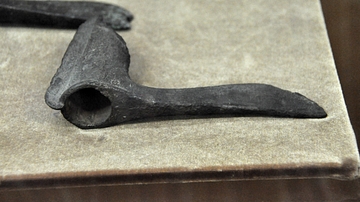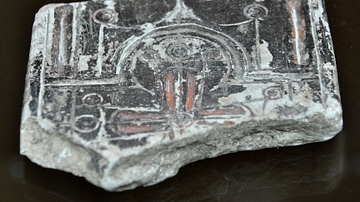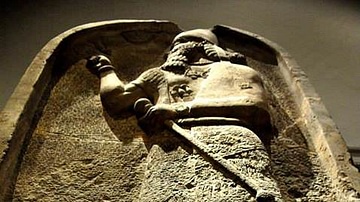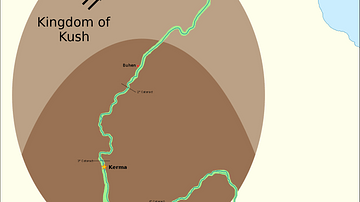Illustration
Provenance unknown, Mesopotamia
Early Dynastic III period, about 2500-2200 BC
A votive offering
This gypsum statute was deposited in a temple to pray on behalf of the donor. It may have been set up in his lifetime or possibly as a memorial after his death. He wears a fleece skirt often referred to as a kaunakes.
The statue was made at a time when southern Mesopotamia was politically fragmented between city-states, competing for control of farmland, water and trade.
Where objects have not been excavated and their origin is unknown, it is often possible to date them by comparing them with dated examples. The style of votive figurines like this one can be shown to change through time. This one dates to a period known as Early Dynastic III.
Cite This Work
APA Style
Museum, T. o. t. B. (2012, April 26). Gypsum statue of a man. World History Encyclopedia. Retrieved from https://www.worldhistory.org/image/530/gypsum-statue-of-a-man/
Chicago Style
Museum, Trustees of the British. "Gypsum statue of a man." World History Encyclopedia. Last modified April 26, 2012. https://www.worldhistory.org/image/530/gypsum-statue-of-a-man/.
MLA Style
Museum, Trustees of the British. "Gypsum statue of a man." World History Encyclopedia. World History Encyclopedia, 26 Apr 2012, https://www.worldhistory.org/image/530/gypsum-statue-of-a-man/. Web. 01 Jul 2025.






